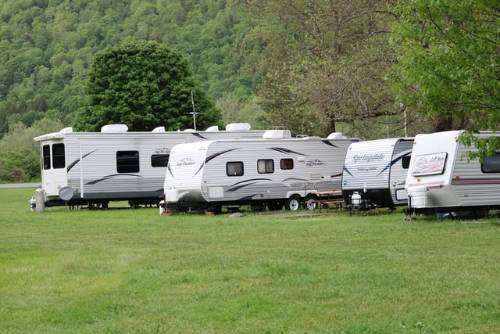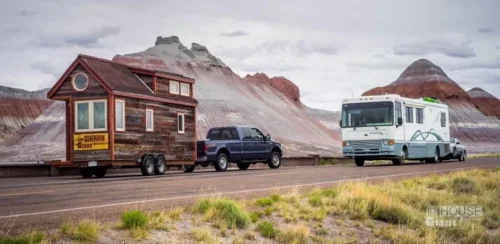People always ask me how I manage to live in a van through the winter, especially in places known for cold and snow. Each time, I tell them, “There ain’t nothin’ to it Joe, ole steely does all the grunt work!” Well, I don’t say it quite like that. The point I make is that having a wood-stove makes hibernal vehicular dwelling much more palatable. Here are my top five reasons for you to install a wood-stove in your rig for this winter!
1. Dry Heat

This is the characteristic that sets wood-stoves apart from more conventional heating methods. Most people don’t realize that the number one issue for van lifers through the winter is not cold, but moisture. Moisture is one of the three malevolent M’s of van life, and it leads to another malevolent M: Mold (the third one is mice). Because your van is an enclosed space, moisture gets trapped inside. Many van lifers have been busted by savvy police officers who know that this moisture will condense on the windows if someone is sleeping in their vehicle.
Moisture is inevitable. Just by breathing, you’re releasing several liters a day into the air. Wet clothes is the second biggest culprit, followed by cooking. This moisture will gradually permeate your whole vehicle. Your home has now become a petri dish for mold. This can affect your health, cause your vehicle to smell bad, and result in general discomfort. Like, who wants their bed to feel damp when they crawl in?
Many folks who use wood to heat their homes need to humidify the house because it actually becomes too dry. In Colorado, the average humidity during the winter is around 15%, which is very dry. My van has become too dry a few times during very cold periods. My lips and fingers started cracking. The easiest way to fix this is to put a kettle of water on your stove. If you see condensation starting to build up, take the kettle off the stove! In general, however, vans collect much more moisture per cubic foot than do houses so this isn’t a problem.
Instead of waking up with dread at getting out of bed, I greet the new day with dry ski boots and outerwear, clear windows and the warm remnants of last night’s fire.
2. No Fossil Fuels
This resonates today more than ever. Not only is our reliance on fossil fuels filling the atmosphere with heat trapping gases like carbon dioxide, it’s funding conflict. The infrastructure required for the extraction, refinement, storage, transport and consumption of all this fuel is massive.

Vans and RVs are small and should use less energy, but the problem is that they are so poorly insulated. When I was heating my van with propane (LPG), I used 50 gallons over the course of a winter. I had to fill my 12 gallon tank every few weeks. A gallon of LPG is 13 lbs of carbon dioxide. Just with my heating fuel alone, my footprint was 650 lbs. Diesel is even worse, at 22 lbs per gallon, and even with moderate use, you will be burning a few gallons a week.
With my wood-stove, all of my heating energy is locally and sustainably sourced. In most forests it’s easy to find dead trees, cut up rounds with my chainsaw and split them up with a maul. Honestly, most of the time I find wood that has already been cut. Many national forests have sections that are used for logging and the scraps make great firewood. Sourcing your firewood like this is going to get your footprint close to carbon neutral.
Moreover, the little stoves used to heat small spaces are also quite efficient, meaning that most of the heat produced is radiated out into the room rather than the atmosphere. This means less fine particulates; these small particles are a source of air pollution and an irritant to the human respiratory system. This is one of the downsides of wood-stoves, but can be reduced by efficient systems that do not produce too much smoke.
3. Affordable

Compared to other ways of heating your vehicle, wood-stoves are by far the most affordable. You can’t use ceramic or catalytic heaters in your vehicle, as they release large amounts of moisture and are not safe to burn in small indoor spaces. Propane furnaces that pump out the combusted vapors run about $800 plus install plus fuel. Diesel heaters can be over $2000 plus install plus fuel for the German models. The Chinese models are cheaper but less durable.
I opted for a hunting stove from Cylinder Stoves in Utah because they are a bit bigger and cheaper than some of the boutique, RV-specific models like Cubic Mini. My stove was about $400. With the planted feet (you absolutely have to be able to bolt your stove down), shipping, and building supplies for the install, the total cost was about $700. Factor in chainsaw and maul and you’re looking at about $1100. Since then I haven’t had to pay for fuel or repairs, and it’s been four years since I installed it! Plus, there’s the added benefit of always having unlimited wood for campfires.
P.S. Interested in installing your own wood stove?
We’ve talked about how propane and diesel heaters produce fumes. Because they exhaust from under the vehicle, diesel heaters can introduce fumes into your living space. Propane furnaces will blow out the exhaust, but lose a lot of heat and efficiency in the process.
Wood-stoves eliminate these issues. A wood-stove pulls air in through a carburetor – the three holes you see in the picture, then send the combusted materials up through the stove pipe. This process is called draw. Physics and engineering come into play here, but basically the length of the stove pipe creates a pull of hot smoke and heat wanted to travel upwards. The fire, which requires oxygen, pulls air in through the front.
One challenge with vehicles is having the stove pipe long enough to create draw. Luckily, with my Cylinder Stove, I get plenty of draw with four feet of pipe. Draw is great because the smoke gets released above the van and does not bother you or other people (although you can still smell it a bit, as I mention), and new, fresh air is introduced into your living space to fill the gradient of oxygen caused by the stove.
This is one of the ways wood-stoves are so dry; moist air from your living space is used to feed the fire, and fresh air from outside is introduced. It sounds cold, but wood-stoves radiate so much heat that you won’t notice a draft!
4. It Smells Like Heaven
In contrast to diesel heaters, wood-stoves smell incredible. In fact, one of my favorite smells in the world is wood smoke on a clear, crisp winters’ night. You wouldn’t believe how many people have come up to me and told me how happy it made them to just walk by and smell my stove. The scent of wood smoke is one of those things that we have lost to modernity.
I like to burn pine for this reason. The smoke is perfume, you can get really get lost in the moment with just one whiff. It’s easy to clean the stove pipe of these small stoves, so you don’t have to worry about a build up of soot. The olfactory and auditory satisfaction of the odoriferous sap and hearty crackle is simply priceless.
5. The Comfort Factor Is Ridiculous
A wood-stove is the coziest thing known to man when your in the mountains in winter. Here are a few of the reasons why the overall comfort factor is higher with wood-stoves:
- There is no noise. Propane and diesel heaters require a 12v fan to circulate the heat produced by combusted fuel. These create an annoying din, particularly when you’re trying to sleep. It turns out that’s exactly when you need them. These also require electricity, which means you have to be thinking about your battery. Solar can be hard to come by in the winter. Mountains are shadowy, there is a low sun angle, and the panels are often snow-covered.
- You can jack up the temperature. When I ran propane, I used to have to be conservative with my thermostat, or else I would be burning gallons of LPG every night. There’s no way I’d be drying off all my wet ski clothes every day. With my wood-stove, I can let the heat crank and get toasty.
- Caveman TV. I don’t have a TV in my rig and neither should you. Sometimes I’ll pull up a seat and just gaze at the flames in my stove.
Sergei has spent his adult life traveling around in his van searching for answers. He is inspired by nature, extreme sports, culture, music, history, science, creative human beings, and animals who live in the mountains with nothing but the fur on their backs.
-
Sergei Poljakhttps://changingears.com/author/sergei-poljak/
-
Sergei Poljakhttps://changingears.com/author/sergei-poljak/










